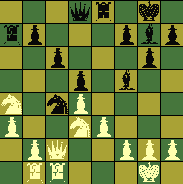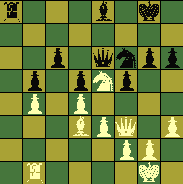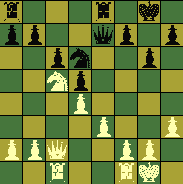
Lecture by UMBC Chess Coach Igor Epshteyn
This lecture also is about Karlsbad pawn structure in center (White pawns: d4, e3, f2; Black pawns b7, c6, d5 ), but new approach in strategical planning is represented. If previous lecture Karlsbad I described 2 main plans for White - pawn minority attack and central breakthrough e3-e4, here we consider application of famous strategical Principle of 2 Weaknesses to middlegame strategy. It is about most complex and effective type of strategy : combining the upper mentioned plans , creating opportunity for both of them, and 2 weaknesses here are 2 defending spots - Queenside and Center. At the same time should be outlined that complexity and precision of moves order suppose additional chances for both sides.
Realization of any part of plan (march of 'b' pawn or breakthrough e3-e4) leads to enhancing of positional edge for White such as: space gaining, creating week 'd' and/or 'a', 'c' pawns, open lines for rooks, mobile pawn center, etc. Black plans for counter play include simplification of position forcing better endgame, preventing from or reducing weaknesses (for instance, move a7-a6), preparing of c6-c5 with favorable edition of move order. In general, Black plans are more passive but strategically sophisticated.
In 2 represented games one can find different decoration. In 'early bird' of 1977 Candidate match Portish-Larsen bias was made on realization of minority attack, but White provoked premature unfavorable displacement of Black pieces vividly preparing for breakthrough e3-e4. Black failed to solve tactical problems but set stubborn resistance afterwards.
Second game Kramnik-Timman is real masterpiece of strategy created by young chess genius against authority #1(according to games played and score) in this variant. Following this game one can apply the knowledge received in the lectures to the real world of Karlsbad structure and step by step evaluate the finest strategy exposed by the winner.
1. c4 Nf6
2. Nc3 e6
3. Nf3 d5
4. d4 Nbd7
5. cxd5 exd5
6. Bg5 Be7
7. e3 0-0
8. Bd3 c6
9. Qc2 Re8
10. 0-0 Nf8
11. Rae1 Be6
12. Qb1 a5
13. a3 N6d7
14. Bxe7 Rxe7
15. b4 axb4
16. Qxb4 Nb6
17. a4 Nc8
18. Ra1 Nd6
19. a5 Bf5
20. Bxf5 Nxf5
21. Rfb1 Nd6
22. Nd2 Ne6
23. Qb6 Qc8
24. Nxd5 Rd7
25. Nc3 Nf5
26. Nf3 Ra6
27. Qb2 Nd6
28. Na4 Qe8
29. Nb6 Rd8
30. Qc2 h6
31. Nc4 Nb5
32. Rd1 Qe7
33. h3 Nec7
34. Rab1 Nd5
35. Rb3 Qe6
36. Nfe5 Raa8
37. Nd3 Qg6
38. Rc1 Qg5
39. Kh2 Re8
40. Nc5 Ra7
41. Rd1 h5
42. e4 Nxd4
43. Rxd4 Nf4
44. Ne3 Nxg2
45. Nxg2 Qe5
46. f4 Qxd4
47. Rg3 Qb4
48. e5 Qxa5
49. Nd7 h4
50. Nf6 Kf8
51. Rxg7
1-0
1. Nf3 Nf6
2. c4 e6
3. Nc3 d5
4. d4 Nbd7
5. cxd5 exd5
6. Bg5 c6
7. e3 Be7
8. Bd3 Nh5
9. Bxe7 Qxe7
10. 0-0 0-0
11. Qb1 Nhf6
12. b4 Re8
13. Rc1 a6
14. a4 g6
15. Qb2 a5
16. bxa5 Rxa5
17. Nd2 Ng4
18. Nb3 Qd6
19. g3 Ra7
20. e4 dxe4
21. Nxe4 Qf8
22. Re1 b6
23. Nbd2 Ba6
24. Bc2 Rb7
25. Bb3 Ngf6
26. Rac1 Rc8
27. Nxf6 Nxf6
28. d5 Nxd5
29. Ne4 Rd8
30. Rxc6 Qb4
31. Nf6 Kf8
32. Nxh7 Kg8
33. Nf6 Kf8
34. Re4
1-0


